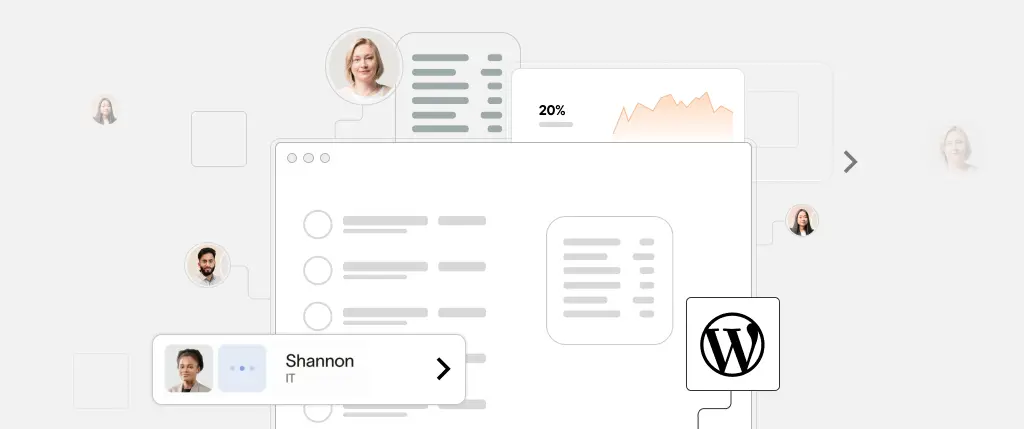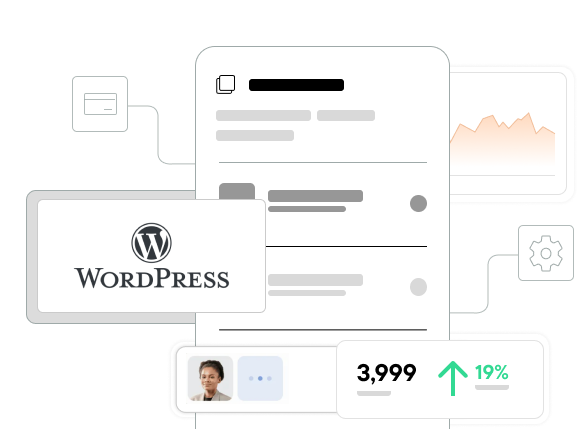If you’re a freelancer, agency, or enterprise managing multiple websites, you’ve likely spent too much time repeating the same setup steps. Installing plugins, configuring settings, and customizing themes again and again can waste hours and lead to errors.
To launch WordPress sites faster, the solution is clear: use blueprints and starter templates to standardize your setup process, reduce friction, and scale with confidence.
In this guide, you’ll learn how to build efficient blueprints, leverage starter templates for development speed, and use tools like Sitebox to automate the entire launch process.
What Are Blueprints and Starter Templates in WordPress?
📦 WordPress Blueprints: A Complete Site-in-a-Box
A WordPress blueprint is a predefined site configuration that includes:
- Required themes and plugins
- Global settings and custom options
- Sample pages and demo content
- Widgets, menus, taxonomies, and post types
Think of it as a launch-ready site template that can be deployed instantly with your preferred defaults.
🧱 Starter Templates: A Developer’s Jumpstart
A starter template is typically a lightweight theme or code scaffold designed for customization. These often include:
- Minimal child themes for custom styling
- Starter SCSS/JS setup
- Accessibility (a11y) and SEO best practices
- Sample template parts and structure
While blueprints focus on full site deployment, starter templates speed up development work at the code level.
How to Build a WordPress Blueprint for Faster Site Launches
To launch WordPress sites faster, your blueprint should capture:
- Active theme and child theme
- Installed and activated plugins
- Core site settings (permalinks, time zones, reading options)
- Widgets, menus, and user roles
- Demo content or starter pages
🔧 Tools You Can Use
- WP-CLI scripts
- Custom YAML or JSON configuration files
- Database exports with selective migration tools
📁 Sample Blueprint Folder Structure
blueprint/
├── wp-config.php
├── themes/
│ └── custom-theme/
├── plugins/
│ ├── contact-form-7/
│ └── yoast-seo/
├── options.json
├── demo-content.xml
└── wp-cli-bootstrap.shAutomate Setup with WP-CLI to Launch WordPress Sites Faster
WP-CLI (WordPress Command Line Interface) is your best friend for automating blueprint installs.
Example: Full Site Installation Script
# Install WordPress
wp core download
wp config create --dbname=wp_blueprint --dbuser=root --dbpass=root
wp db create
wp core install --url="http://localhost" --title="Blueprint Site" \
--admin_user="admin" --admin_password="pass" --admin_email="[email protected]"
# Activate theme and plugins
wp theme activate custom-starter
wp plugin install classic-editor contact-form-7 --activate
# Import demo content
wp import demo-content.xml --authors=createExample: YAML Blueprint File
title: "Agency Starter Blueprint"
theme: "custom-agency-theme"
plugins:
- contact-form-7
- yoast-seo
- wpforms-lite
options:
blogdescription: "Managed by the Agency Team"
timezone_string: "America/New_York"
permalink_structure: "/%postname%/"
demo_content: "demo-content.xml"Use a custom parser or CLI tool to apply these settings automatically.
Best Practices to Launch WordPress Sites Faster with Blueprints
✅ 1. Keep Blueprints Modular
Create purpose-specific blueprints (e.g., eCommerce, blog, portfolio) to reuse as needed.
✅ 2. Use Version Control
Store YAML files, scripts, and assets in a Git repository for collaboration and rollback.
✅ 3. Document Everything
Include a README.md for each blueprint to explain usage, plugins included, and setup instructions.
✅ 4. Audit and Update Quarterly
Regularly review your plugins, themes, and configurations to avoid security risks and technical debt.
✅ 5. Add Conditional Logic to Scripts
Handle missing plugins or themes gracefully to prevent errors during deployment.
if ! wp plugin is-installed contact-form-7; then
wp plugin install contact-form-7 --activate
fiManaging Blueprint Deployments Across Teams
When collaborating across distributed teams, standardization is key. Store your blueprints in a shared GitHub repo or private CI/CD environment with:
- Detailed instructions
- Prebuilt CLI scripts
- Environment-specific variables
- Access controls for different team roles
This helps maintain consistency and reduce misconfiguration across projects.
Use Sitebox to Launch WordPress Sites Faster at Scale
While hand-built scripts and blueprints work for small teams, they don’t scale well across departments or global teams. That’s where Sitebox comes in.
🚀 Sitebox Features for Faster Site Launches
- Prebuilt Blueprints: Define reusable templates with themes, plugins, and layouts.
- One-Click Launches: Spin up new sites instantly across staging or production environments.
- Role-Based Permissions: Ensure only authorized users can edit, deploy, or modify blueprints.
- Global Updates: Push plugin or layout updates across all live sites with version control.
- Audit Trails: Track every change to blueprints and who made them.
Sitebox brings speed, standardization, and governance to site deployment—without custom scripting or scattered tools.
Conclusion: Launch WordPress Sites Faster and Smarter
Launching new websites shouldn’t be a bottleneck. With the power of WordPress blueprints and starter templates, you can:
- Reduce setup time
- Eliminate repetitive tasks
- Ensure consistent quality
- Scale your site creation process efficiently
Whether you’re scripting it yourself or using Sitebox for enterprise-ready automation, you can now launch WordPress sites faster and more reliably than ever before.
✅ Ready to streamline your workflow?
👉 Request a Sitebox Demo and see how fast blueprint-driven deployments can work for your team.




